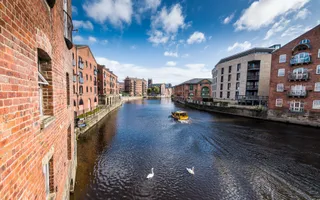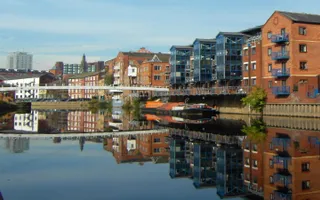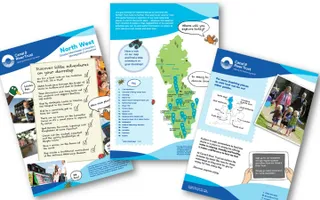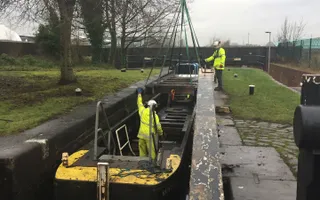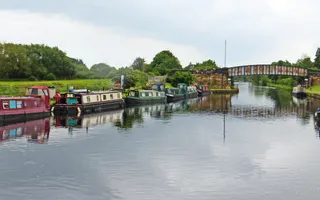The Canal & River Trust looks after the navigable parts of the River Aire, from Leeds to Haddlesey weir, just after Knottingley.
From the remote reaches of the Yorkshire Dales, it runs through the historic market town of Skipton and the fascinating Victorian textile workers' village of Saltaire, with its well-preserved wool mill, almshouses and churches.
It passes the dramatic ruins of Kirkstall Abbey, before entering the cosmopolitan centre of Leeds. Finally, it flows into the River Ouse in the remote and unspoiled countryside near the small town of Airmyn.
A history of the River Aire
The Aire & Calder Navigation was given its Act in 1699 to make the river below Leeds navigable. Upstream, a bill to make it navigable from Bingley to Skipton was presented unsuccessfully to Parliament in 1740, the proposal eventually becoming the Leeds & Liverpool Canal.
The Aire's course passes through coalfields and the greater part of its length became highly industrialised such that, together with the Don, Rother and Calder, it was instrumental in the making of modern Yorkshire though this was at the expense of the quality of the river itself.
A local piece of comic verse inspired by the meeting of the Aire with the Calder stating "That's why the Castleford girls are so fair, they bathe in the Calder and dry in the Aire," was evidently penned long before pollution became a serious problem. At one point the river was so fouled that it was unable to sustain any form of wildlife whatsoever, a situation that has dramatically been turned for the better in recent years. The River Aire is now a pleasant spot for a weekend walk.


